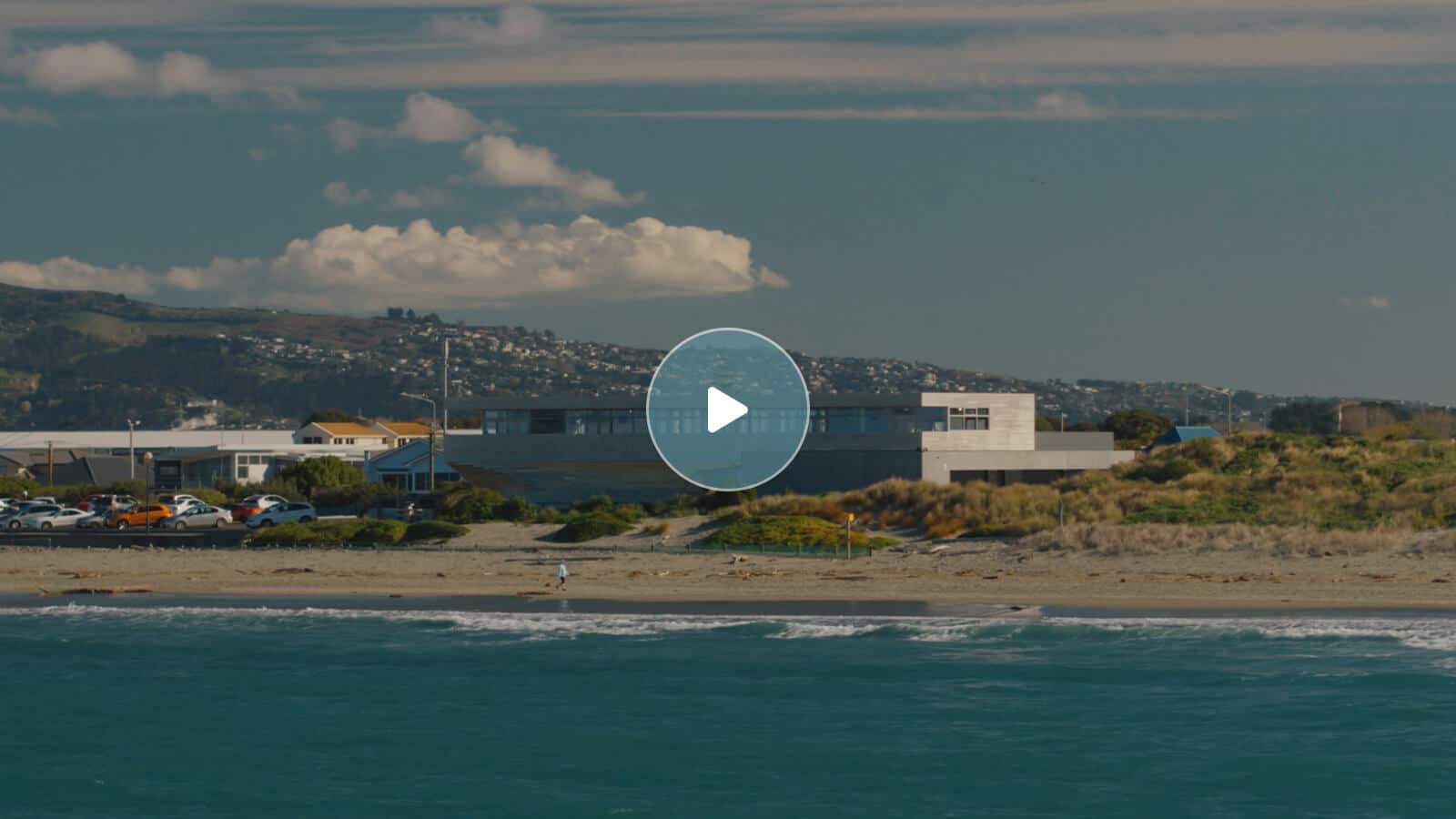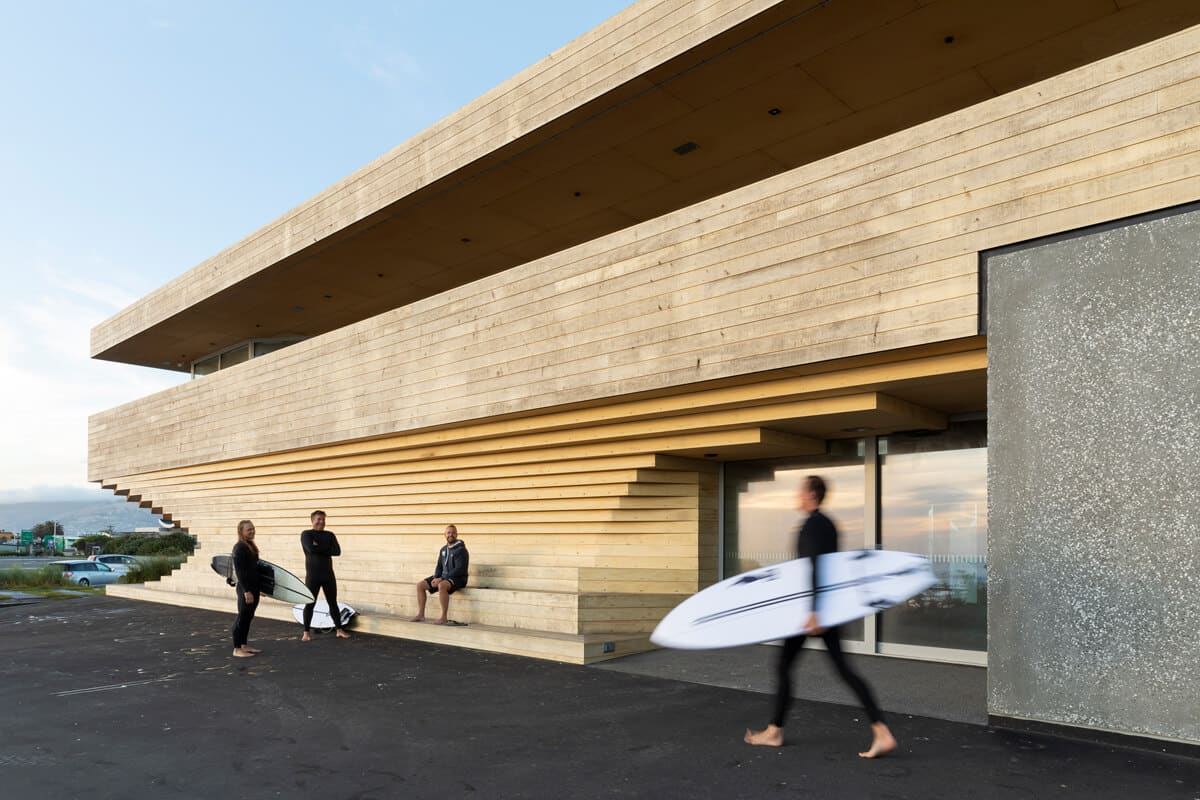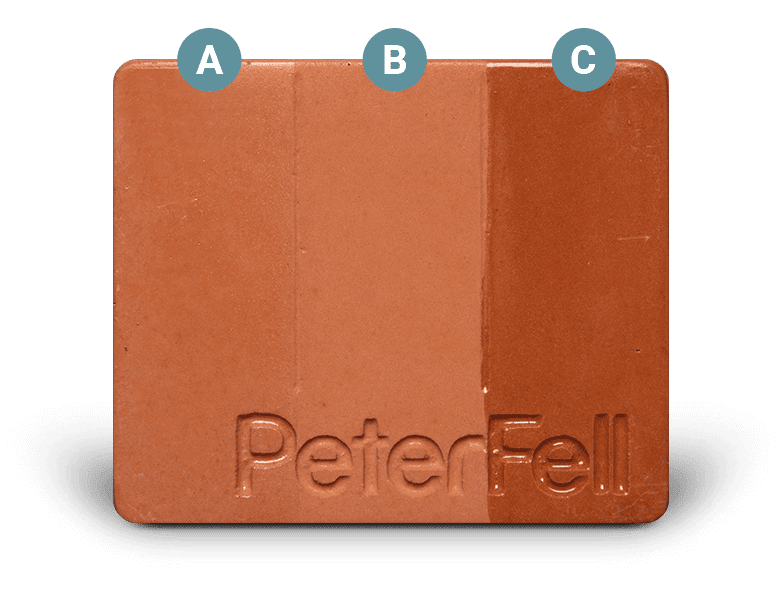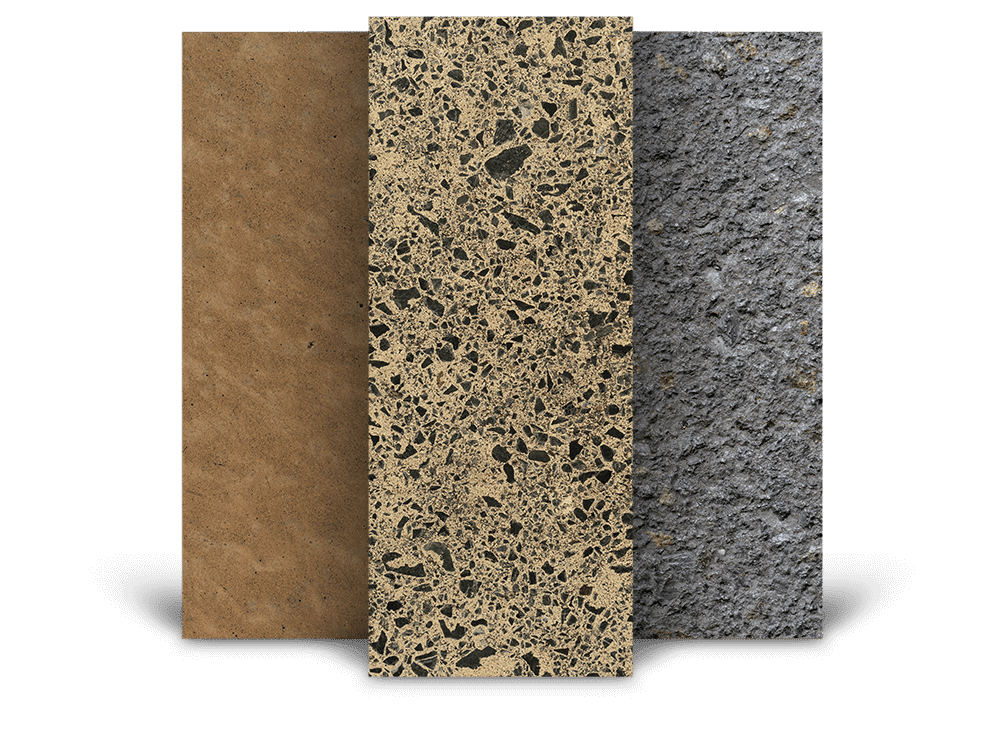
There’s something wonderfully primal about the dramatic sweep of Christchurch’s east coast, with its mix of tussock, sand, sea and dunes.
The flip side of course, is that the same forces of nature that create all this magnificent scenery can be brutal on buildings along the waterfront.
The New Brighton Surf Club is a case in point.
The original structure, erected in the early part of the twentieth century, gave up its battle with Mother Nature years ago. The second attempt, built in the 1940s, didn’t fare much better.

The latest iteration, which is the result of a collaboration between Christchurch’s South by Southeast Architects and Norwegian architectural firm, Snøhetta, promises to be far more enduring.
“We wanted to pick materials that didn’t require ongoing maintenance and could hold up to the environment,” says Ken Powrie of South by Southeast Architects. “Accoya timber was one of our main materials – it has amazing durability.”
Oversized panels of precast concrete have also been used extensively throughout the L-shaped building.
PeterFell black oxide was used in the panels to both offset the colour of the aggregate and help ground the building with its surroundings.


“The environment that the Club is set in is all about sand, sea and dunes, so we deliberately pared the palette back, letting the building connect with the landscape,” Ken explains. “The soothing choices of the material and colour palettes mean the building is both sculptural in the landscape and integrates easily within the tawny, beach setting.”
And of course, it’s all designed to last.
The timber will silver off over time as intended, while the black oxide used in the concrete will maintain its hues forever and a day. It won’t fade or chip off. That’s because the iron oxide colour isn’t just a surface coating – it’s mixed all the way through the concrete. The colour is UV stable too, so there’s no risk of fading.
With durability and longevity being major drivers for the project, it was decided to protect the precast panels with PeterFell Natural Sealer.
Instead of forming a surface coating that can be worn away over time, PeterFell Natural Sealer penetrates deep into the concrete, protecting it against staining or marking and making it easier to clean and maintain.
PeterFell Black Oxide and PeterFell Natural Sealer have also been used on the concrete flooring in the Club’s entry foyer. With sea spray and lots of wet foot traffic being the order of the day here, special attention needed to be given to creating a non-slip floor.
The PeterFell Texture Safe System provided the perfect solution.
Rather than simply being an anti-slip application, Texture Safe is a permanent non-slip texture that’s part of the concrete’s surface. This is achieved through a process called Bush Hammering, which uses special tooling from PeterFell to texture the concrete surface.

The durability of the System is enhanced with PeterFell’s C2 densifier. This penetrates deep into the pores of the concrete to make the surface even harder, which in turn helps retain the texture profile.
The end result is a floor that marries the look of polished concrete, with texture that reflects the building’s exterior.
We have an extensive range of colours and sealers available, plus you can order free samples of coloured concrete to help you make your final decision.
Credits
Architect: South by Southeast Architects
Photography: Sarah Rowlands






